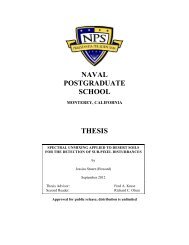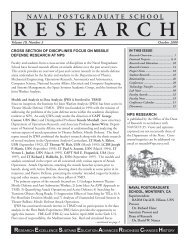Provincial Overview
Provincial Overview
Provincial Overview
Create successful ePaper yourself
Turn your PDF publications into a flip-book with our unique Google optimized e-Paper software.
Baluch: The Baluch, thought to number over a million in Afghanistan, are an Indo-Iranian ethnic group spread over<br />
Afghanistan, Pakistan, and Iran. Significant numbers also exist abroad. In Pakistan, Baluchi independence groups<br />
have fought with Islamabad over the revenues from natural resources in Baluchistan. The capital of Pakistani<br />
Baluchistan is Quetta, where many of the Taliban are thought to have fled after their fall from power, but Kalat,<br />
further south, has traditionally been the seat of the Baluch Khans. The Baluch are overwhelmingly but not entirely<br />
Sunni Muslims. Their power-structures, based on the khan, are generally perceived to be more concentrated than<br />
those of the more fractious Pashtuns. In Afghanistan they are primarily nomadic, roaming the southernmost districts<br />
of the three southernmost provinces with small numbers present in Badghis Province.<br />
Hazara: The Hazara, a distinct ethnic and religious group within the population of Afghanistan; they have often<br />
been the target of discriminatory and violent repression. Most likely descended from the Mongols of Genghis Khan,<br />
(there is also a strong argument that they are of Eastern Turkic origin), the Hazara are noticeably different in<br />
physical appearance when compared to the Pashtun majority. In terms of religion, the vast majority of the Hazara<br />
are of the Shia Muslim faith, again in contrast to the Pashtuns who are Sunni Muslim. Due to these differences,<br />
“the Hazara have experienced discrimination at the hands of the Pashtun-dominated government throughout the<br />
history of modern Afghanistan.” 18 As the traditional underclass of Afghan society, Hazara were exploited and<br />
made to work as servants and laborers. As a result, there tends to be an anti-government and anti-Pashtun bias<br />
among the Hazara. In present day Afghanistan, the Hazara are divided geographically into two main groups: the<br />
Hazarajat Hazara and those who live outside the Hazarajat. The Hazarajat is located in the Hindu Kush Mountains<br />
in central Afghanistan and is “centered on Bamiyan province and include[s] areas of Ghowr, Uruzgan, Wardak, and<br />
Ghazni province.” 19 The Hazara living outside of the Hazarajat live in and around Kabul, Herat, Mazar-e Sharif<br />
and Samangan province. Due to atrocities committed against them by the Taliban, the Hazara by and large are<br />
opposed to the Taliban. In August 1998, the Taliban massacred approximately 4,000 Hazara in Mazara-e Sharif;<br />
this massacre was followed by another the next month when the Taliban killed another 500 Hazara in Bamiyan.<br />
The Hezb-e Wahdat (Islamic Unity Party of Afghanistan) is an umbrella political organization which commands the<br />
support of large numbers of Hazara. The Hazara are also often at odds with the Kuchi population within the<br />
Hazarajat. The Hazara of Badghis reside in the western reaches of the province.<br />
Aimak: The Aimak are a Persian-speaking nomadic or semi-nomadic tribe of mixed Iranian and Mongolian<br />
descent who inhabit the north and north-west highlands of Afghanistan and the Khorasan Province of Iran. 20 They<br />
are closely related to the Hazara, and to some degree the Tajiks. They live in western Hazarajat in the provinces of<br />
Ghor, Farah, Herat, Badghis, Faryab, Jowzjan and Sar-e Pol. The term Aimak derives from the Mongolian term for<br />
tribe (Aimag). They were originally known as chahar or (the four) Eimaks, because there were four principal<br />
tribes: the Taimani (the predominating element in the population of Ghor), the Ferozkhoi, the Temuri, and the<br />
Jamshidi. Estimates of the Aimak population vary between 250,000 and 2 million. They are Sunni Muslims, in<br />
contrast to the Hazara, who are Shiahs. The best estimates of the Aimak population in Afghanistan hover around 1-<br />
2 million. The tally is made difficult since, as a consequence of centuries of oppression of the Hazara people in<br />
Afghanistan, some Aimagh Hazaras are classified by the state as Tajik, or Persian instead of Aimaks.<br />
-Chanar: The Chanar Aimaqs are believed to be of Turco-Mongolian origin. This assessment is based on<br />
their physical appearance and the style of dwellings they utilize which closely resemble Mongolian style yurts. The<br />
Chanar speak a Persian dialect (Dari) unlike their Turco-Mongolian kinsmen in other areas. 21 The Chanar Aimak<br />
of Badghis are dominant throughout the southern half of the province.<br />
Security Landscape:<br />
General Level of Security: 22<br />
Badghis was the first northern province to be sezied by the Taliban in late 2006. 23 Even after their official takeover<br />
of the province, the largely Uzbek and Turkmen population of the province resisted the rule of the Pashtun Taliban.<br />
18 US State Department Afghanistan Culture and Ethnic Studies, 2004.<br />
19 US State Department Afghanistan Culture and Ethnic Studies, 2004.<br />
20 Janata, A. "AYMĀQ". Encyclopædia Iranica. Ed. Ehsan Yarshater. United States: Columbia University.<br />
21 "Afghanistan". Encyclopedia Britannica. Ultimate Reference Suite. Chicago: Encyclopedia Britannica, 2008.<br />
22 Badghis Province. Available at http://www.afgha.com/?q=node/4020 (accessed July 16, 2008)<br />
23 Neamatollah Nojumi, The Rise of the Taliban in Afghanistan (Palgrave, 2002), page 159
















